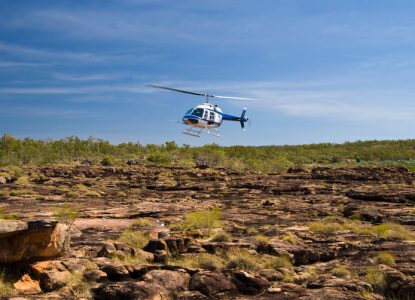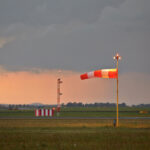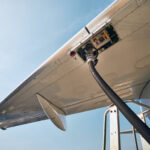Mastering Autorotation in Flight Training
Autorotation is a cornerstone of helicopter safety flight training—an emergency descent technique that every student must master. When engine power is lost, autorotation allows the helicopter to safely descend and land by using airflow to keep the rotor system turning. But successful autorotation isn’t just a checklist item—it’s a delicate balance of physics, pilot skill, and rapid decision-making.
Energy Management
In an autorotation, pilots learn to trade altitude for rotor RPM and airspeed—a perfect real-world application of energy management. As the helicopter descends, the upward airflow through the rotor system keeps the blades spinning. A smooth, controlled glide preserves enough energy for a final flare and gentle touchdown. Instructors emphasize how important it is to manage this exchange and avoid premature or aggressive control inputs that rob the system of energy. One of the most important teaching tools is helping students visualize the energy “budget” they’re working with—how much altitude they have, how fast they’re going, and what they’ll need to arrest the descent right before touchdown.
Four Keys to a Safe Autorotation
- Airspeed – Maintain optimal forward airspeed for glide range and flare authority. Too fast or too slow, and you compromise control.
- Rotor RPM – Keep the rotor RPM within limits to ensure energy is available for the flare and landing. Over/under-speeding can be dangerous.
- Landing Zone – Identify and commit to a safe, reachable landing site early. Terrain, wind, and distance all play a role.
- The Flare – Perfect timing is everything. A well-executed flare cushions the descent, arrests forward speed, and aligns for landing. Poor flare = hard landing.
How To Train
Good instructors know that confidence comes with repetition and realism. Early autorotation training begins with straight-in, power-recovery descents, where the student can focus on airspeed and rotor RPM. As training progresses, they’ll encounter 180-degree turns, different entry speeds, and simulated emergencies. A big part of teaching is helping students stay calm, process the situation, and execute without panic. Many instructors emphasize the value of building muscle memory and visual cues—allowing students to instinctively transition into autorotation mode when they hear the simulated engine-out call.
Common Student Mistakes in Autorotation:
- Fixating on the panel instead of looking outside.
- Overcontrolling the collective during descent.
- Forgetting to maintain airspeed (either ballooning or stalling).
- Delaying the flare or flaring too early.
- Failing to select a suitable landing zone in time.
- Mismanaging rotor RPM—either overspeeding or letting it drop.
- Becoming paralyzed by indecision or surprise during simulated failures.
Conclusion
Autorotation isn’t just an emergency maneuver—it’s a mindset. The more a pilot understands the physics, practices the execution, and anticipates the challenge, the better their odds in a real emergency. Whether you’re just starting flight training as a student pilot or guiding the next generation as an instructor, mastering autorotation is one of the most empowering skills in helicopter aviation.
RELATED CTS TRAINING
RELATED CTS TRAINING









